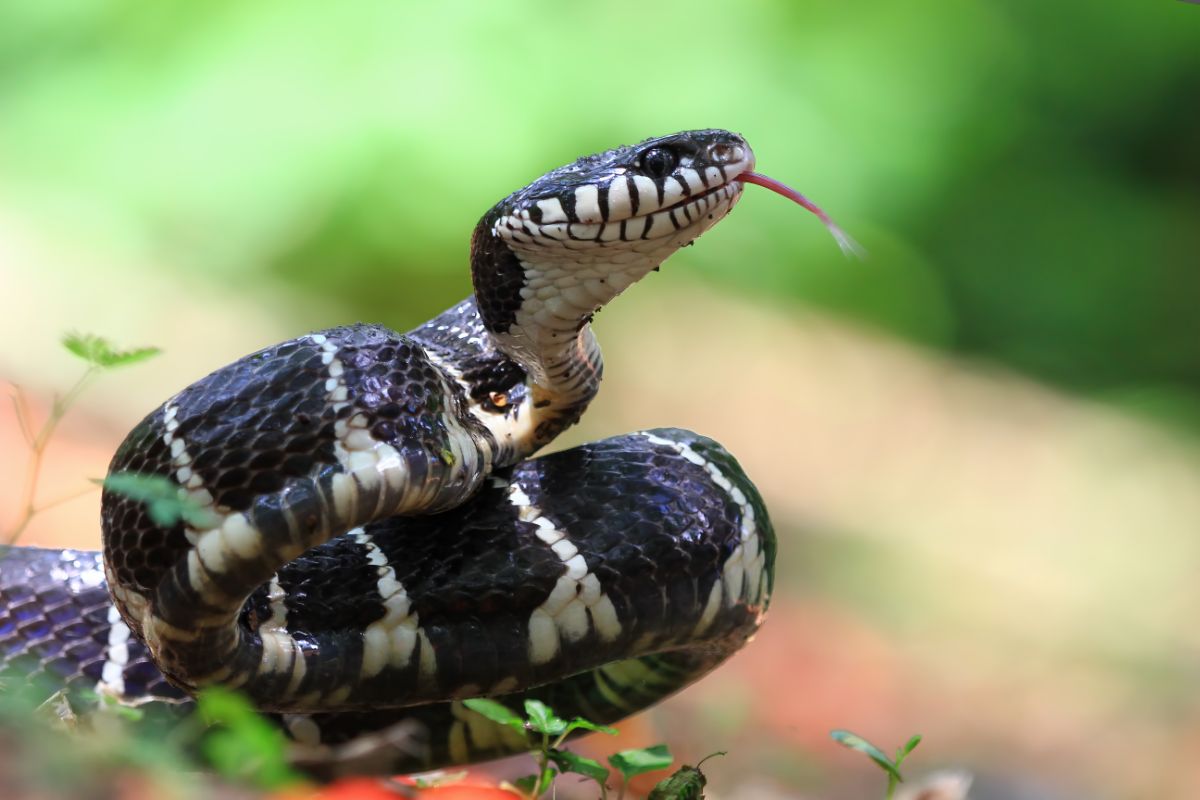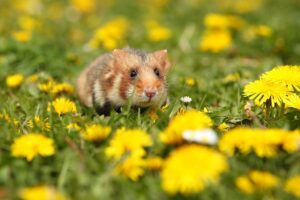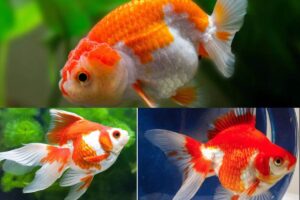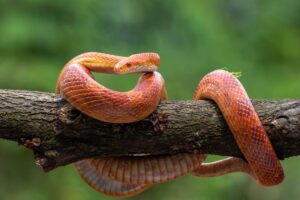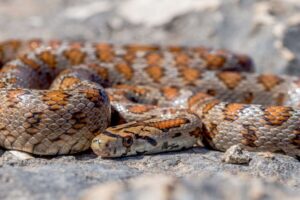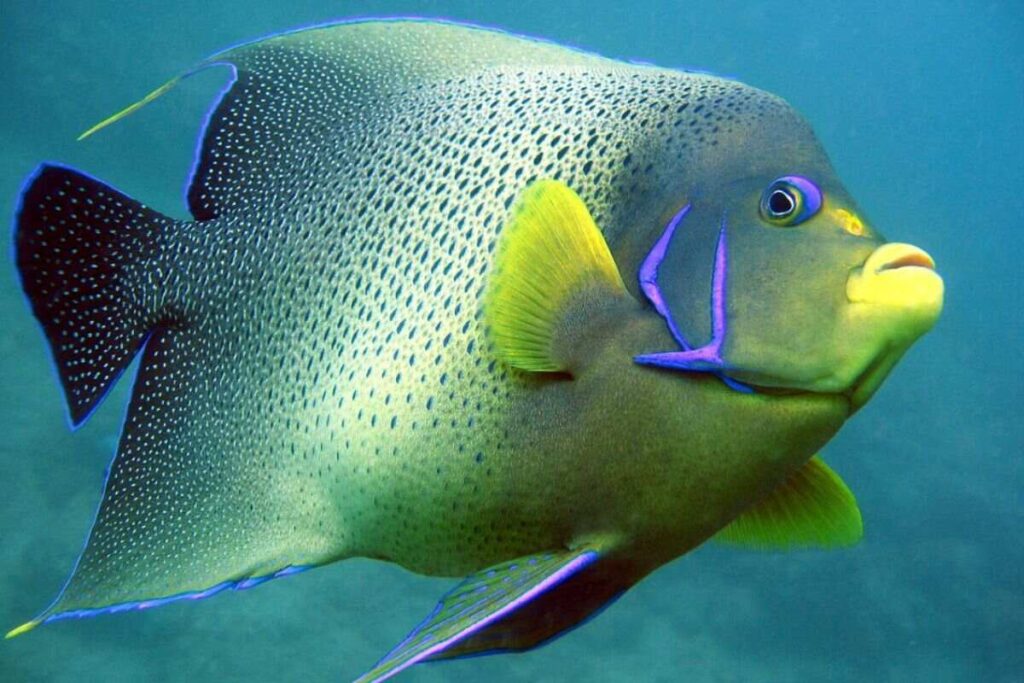Black and white snakes have captivated people’s imaginations for centuries. Their striking monochromatic patterns, sharp contrasts, and elegant markings make them stand out in the natural world. These snakes, which range from venomous to harmless, play crucial roles in various ecosystems, whether as predators, pest controllers, or fascinating species in captivity. The beauty of their black-and-white coloring evokes curiosity and admiration, but it also serves significant ecological and survival purposes.
Understanding Their Unique Aesthetic
Why Monochrome Patterns Stand Out in Nature
Nature’s artistry is often vibrant, with splashes of color to attract mates or warn off predators. However, the black and white snakes prove that simplicity can also be breathtaking. Their stark, high-contrast coloration allows them to blend into diverse environments, from sandy deserts to lush forests. This monochrome aesthetic is a byproduct of evolutionary adaptations that give these snakes an edge in hunting, evading predators, and communicating with others of their species.
How Coloration Impacts Snake Behavior and Survival
Coloration in snakes is far more than an aesthetic trait—it can dictate their behavior, from their hunting techniques to how they defend themselves. Depending on their habitat, black and white patterns may aid in camouflage, helping them merge with dappled shadows or sunlit rocks. For some, such as the venomous kraits and coral snakes, these patterns serve as warning signals to predators, a vivid reminder of their toxic bite. In other cases, black and white snakes mimic more dangerous species to avoid being attacked.
Camouflage and Predatory Strategies
The duality of black and white coloration offers distinct advantages in the wild. For many species, the ability to blend into both light and dark environments makes them excellent ambush predators. Whether they hide in the crevices of rocks or lie in wait under the canopy of trees, these snakes use their coloration to remain unseen until it’s too late for their prey.
Top 10 Black and White Snakes
While some snakes rely on bright hues to be identified, black-and-white species have markings or patterns that help differentiate them. These patterns can also help to determine whether a species is venomous or non-venomous, a critical skill for those who live in areas populated by these reptiles. Now, let’s dive into the specifics of the most captivating black and white snake species.
California Kingsnake
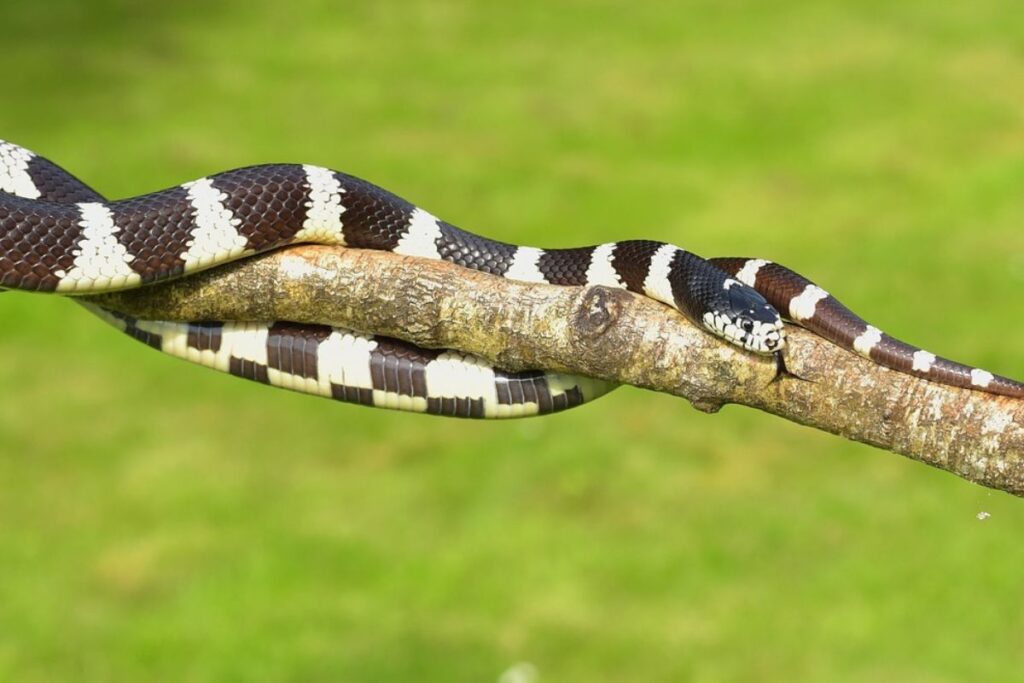
The California kingsnake (Lampropeltis californiae) is a non-venomous snake native to the western United States and northern Mexico. Deserts, grasslands, forests, and even residential areas are among the diverse habitats for this versatile species. Known for their constricting abilities, California kingsnakes primarily feed on small mammals, birds, amphibians, and other reptiles, including rattlesnakes. Their immunity to rattlesnake venom makes them formidable predators in regions where these venomous species are common. California kingsnakes are relatively easy to care for in captivity, making them popular among reptile enthusiasts. They require a secure enclosure, as they are known to be escape artists. Proper heating, humidity, and a diet of appropriately sized prey ensure their well-being.
Black Rat Snake
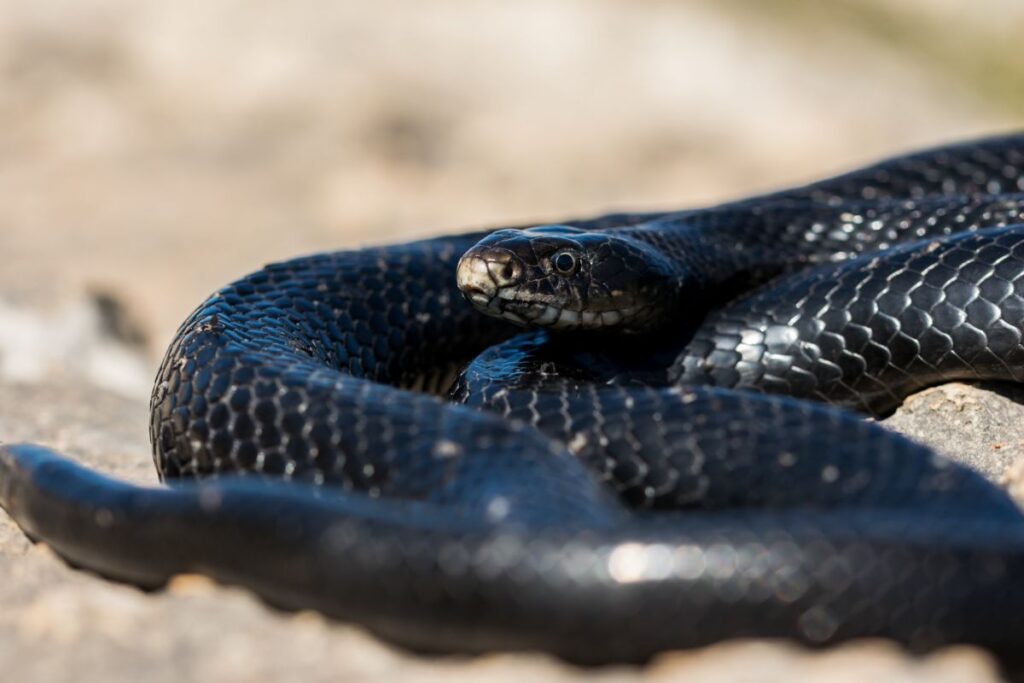
The black rat snake (Pantherophis obsoletus), often mistaken for a venomous species due to its size and coloration, is a non-venomous constrictor with glossy black scales and a white underbelly. Their sheer length, sometimes reaching over 8 feet, is one of their most notable physical traits. Black rat snakes are vital in controlling rodent populations, especially in agriculture. Their appetite for rats and mice benefits farmers, as they naturally reduce the number of crop-destroying pests. These snakes typically breed in the spring, with females laying clutches of up to 20 eggs. Hatchlings emerge in late summer, and though they start small, they grow quickly in their early years, eventually reaching full size within a few years.
Common Krait
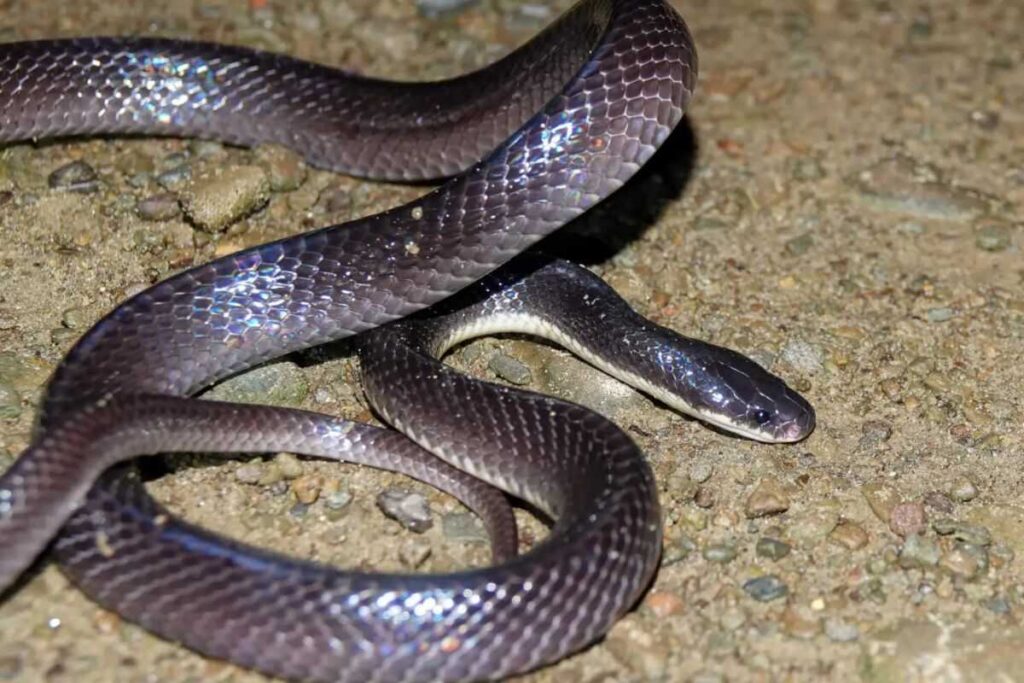
The common krait (Bungarus caeruleus) is a highly venomous species in South Asia. Its venom contains potent neurotoxins, and bites can be fatal if untreated. However, the krait is shy and nocturnal, rarely aggressive unless provoked. Being primarily nocturnal, kraits prefer to hunt at night, preying on other snakes, rodents, and small mammals. When threatened, they coil tightly and remain still, relying on their stealth rather than aggression to avoid predators. Common kraits favor lowland habitats such as agricultural fields, scrublands, and human settlements. They are widespread across India, Sri Lanka, and neighboring countries.
Banded Sea Krait
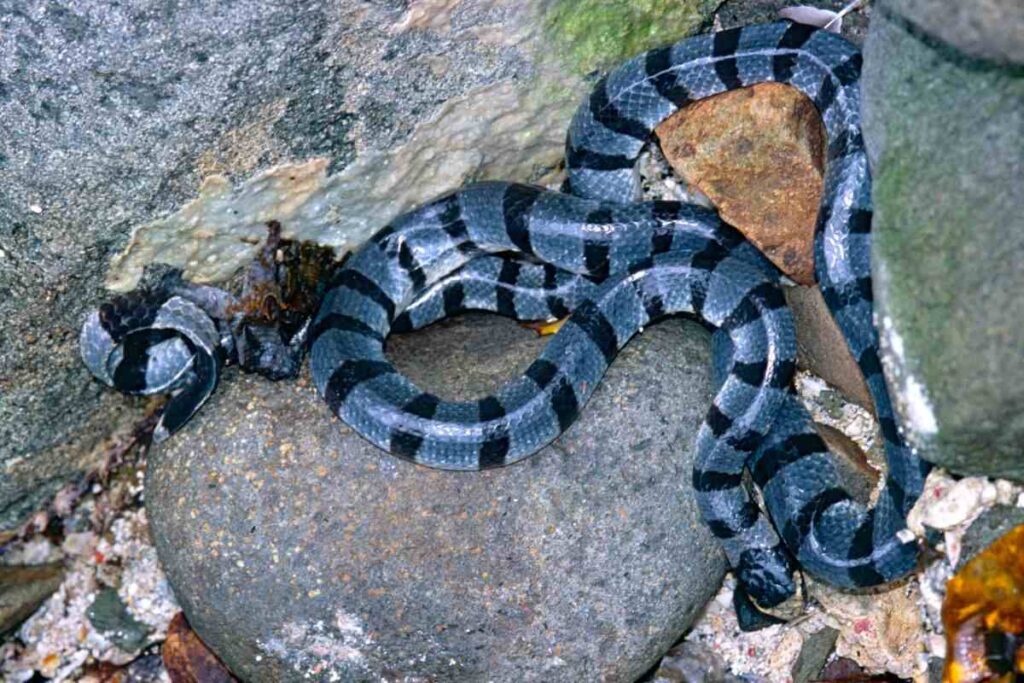
Banded sea kraits (Laticauda colubrina) are semi-aquatic snakes adapted to life in land and sea environments. They have paddle-like tails for swimming and can hold their breath for extended periods while hunting underwater. These snakes primarily feed on eels and small fish. While not particularly dangerous to humans, their venom is potent enough to immobilize their aquatic prey quickly. While their venom is strong, banded sea kraits are generally docile around humans. They are often found near coral reefs in the Indo-Pacific region. Conservation efforts focus on protecting their marine habitats from pollution and degradation.
Eastern Coral Snake

The eastern coral snake (Micrurus fulvius) is notorious for its powerful neurotoxic venom. While they are reclusive and not prone to biting, a single bite can cause respiratory failure if untreated. Eastern coral snakes are famous for their mimicry pattern, whereas non-venomous snakes like the scarlet kingsnake exhibit similar red, yellow, and black banding. This mimicry helps them avoid predation by capitalizing on the coral snake’s deadly reputation. Coral snakes are found primarily in the southeastern United States and inhabit wooded areas, swamps, and sandy soils. They are elusive and spend much time hidden under debris or burrowed in the ground.
Banded Rock Rattlesnake
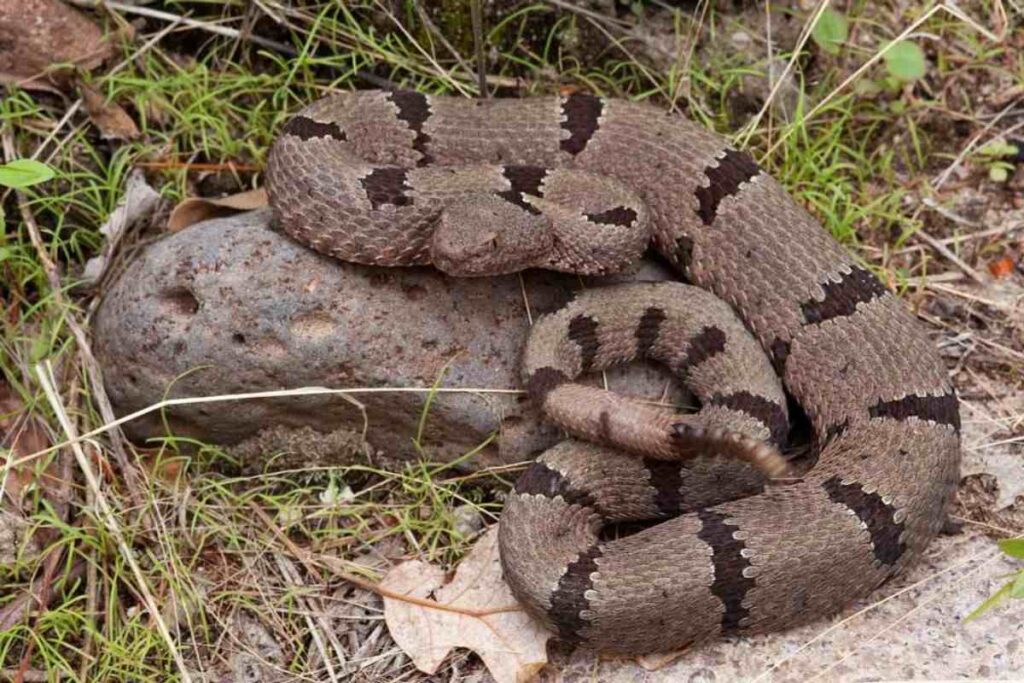
The banded rock rattlesnake (Crotalus lepidus) is a small, venomous species known for its distinctive black and white bands. It alerts possible dangers with its rattle, found at the end of its tail. This species is typically found in rocky mountainous regions across the southwestern United States and northern Mexico. They are well camouflaged among the stones, blending seamlessly into their surroundings. Although not considered aggressive, banded rock rattlesnakes will defend themselves if cornered. They face habitat loss due to human expansion, but their populations remain stable.
Mangrove Snake
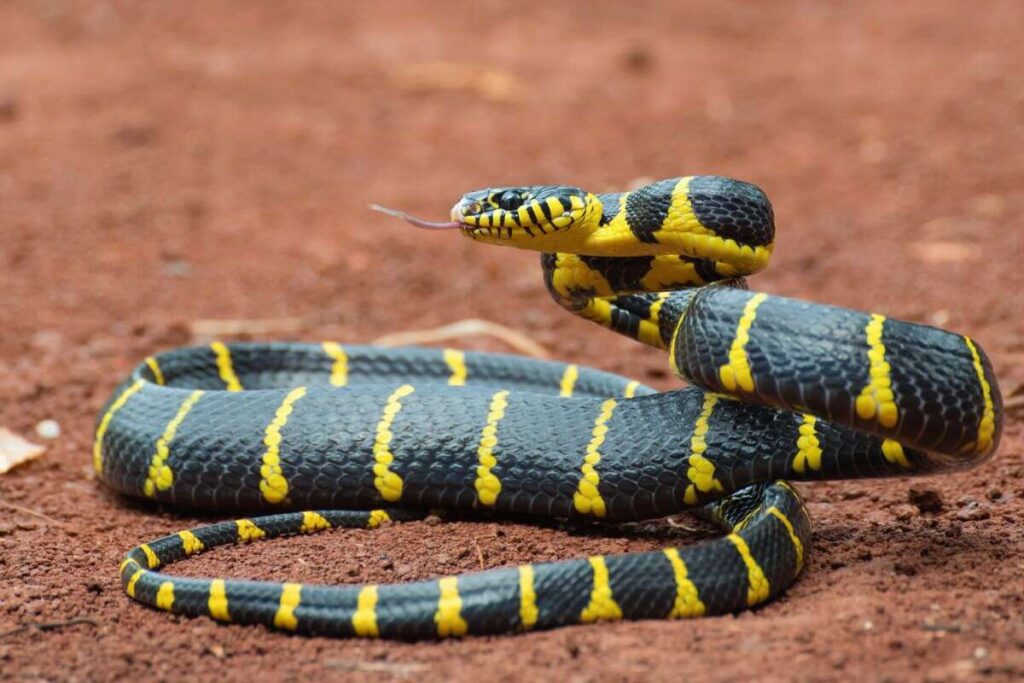
The mangrove snake (Boiga dendrophila), the gold-ringed cat snake, is an arboreal species that thrives in mangrove forests across Southeast Asia. It may ambush animals from above thanks to its ability to climb trees. Despite its primarily black body, the mangrove snake’s golden bands make it an eye-catching species. This color contrast aids in its predatory tactics, allowing it to blend into the forest shadows while remaining unseen by its prey. Mangrove snakes are a popular choice among snake enthusiasts, though they require spacious enclosures and careful handling, as they can be somewhat aggressive and are mildly venomous.
Speckled Kingsnake
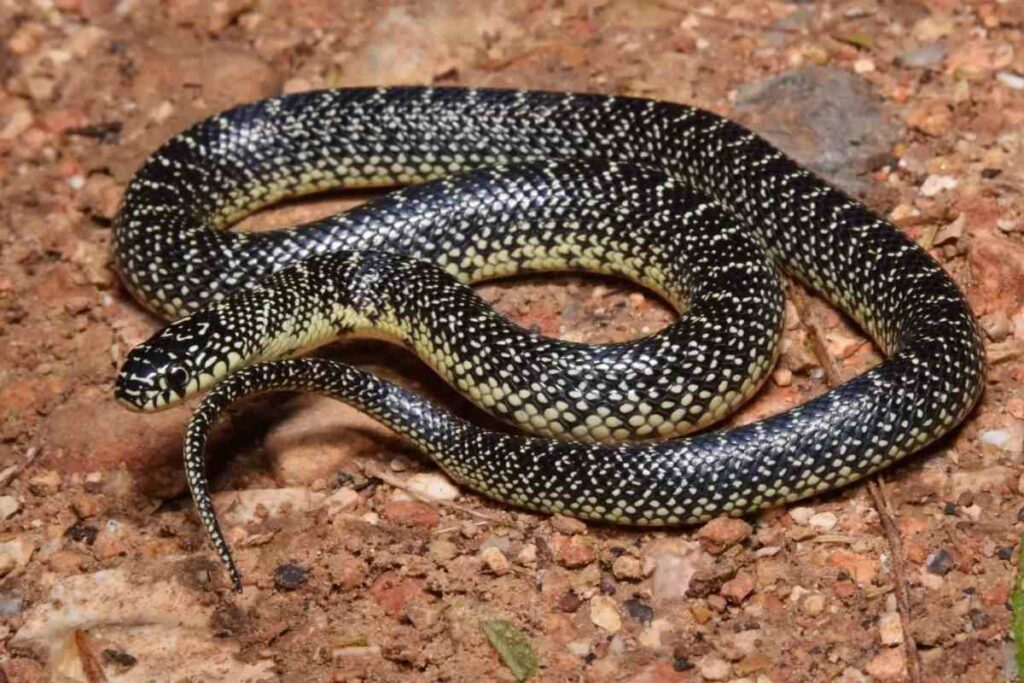
The speckled kingsnake (Lampropeltis holbrooki) is native to the central United States. Its glossy black body is speckled with small yellow or white dots, making it one of the most visually striking kingsnake species. Like other kingsnakes, the speckled kingsnake is important in controlling pest populations, particularly rodents and other small mammals. Their constricting ability makes them effective predators. Speckled kingsnakes are known for longevity, often living over 20 years in captivity. Breeding usually occurs in the spring, with females laying small clutches of eggs.
Western Hognose Snake
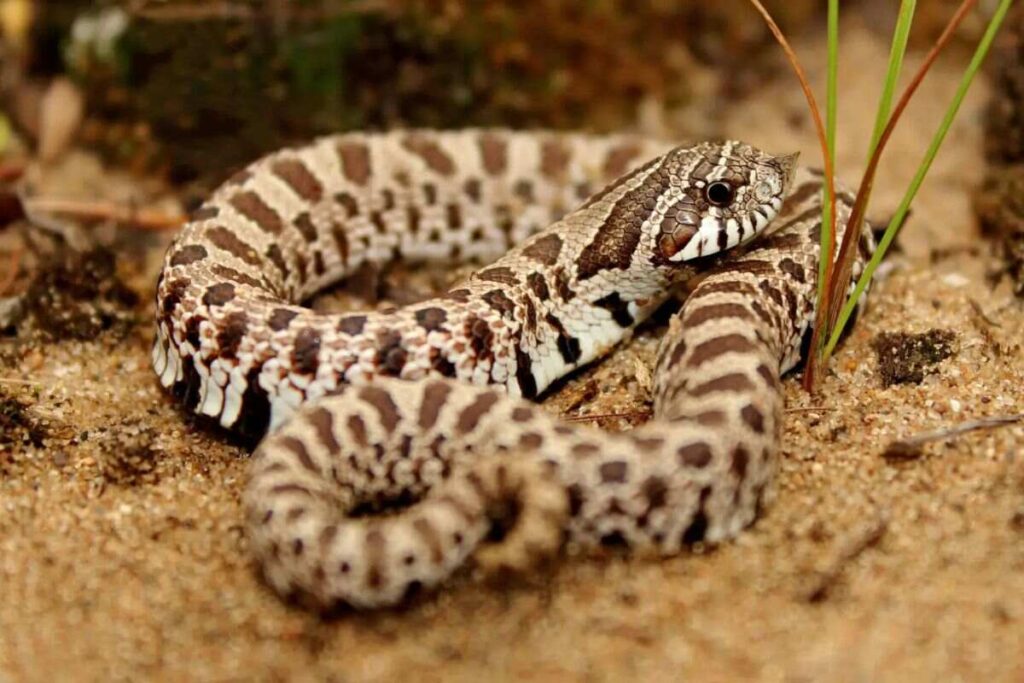
Western hognose snakes (Heterodon nasicus) exhibit various color morphs, including individuals with striking black-and-white patterns. Their upturned snouts give them a distinctive appearance and aid in burrowing. These snakes are famous for their dramatic defensive displays, including flattening their heads, hissing, and even playing dead to deter predators. Despite this, they are non-venomous and harmless to humans. Western hognose snakes are common pets because of their kind disposition and small size. They thrive in captivity with the proper care and diet, making them a favorite among snake enthusiasts.
Black-Headed Python
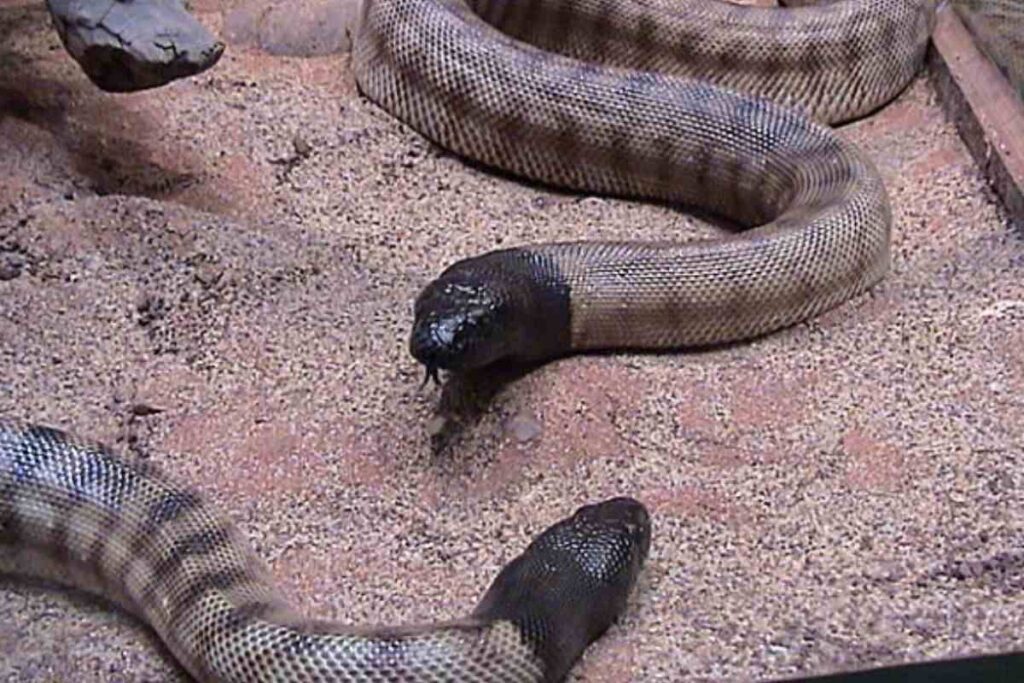
The black-headed python (Aspidites melanocephalus) is native to northern Australia and is instantly recognizable by its jet-black head and contrasting pale body. Its black head helps it to regulate body temperature by absorbing heat from the sun. Black-headed pythons primarily feed on reptiles, including other snakes, unlike many other snakes. Their powerful bodies allow them to subdue even large prey with ease. While not considered endangered, black-headed pythons face threats from habitat destruction. Conservation efforts focus on protecting their natural environment to ensure their survival in the wild.
Tips for Identifying Black and White Snake Species
Key Features to Observe
When identifying black and white snakes, pay close attention to their patterns, banding, and head shape. Venomous species often have distinct warning markings, such as the bright bands of coral snakes.
Differentiating Between Venomous and Non-Venomous Snakes
One of the most critical skills for snake enthusiasts and those living in snake-prone areas is distinguishing between venomous and non-venomous species. Mimicry can make this challenging, but learning the key visual cues, such as head shape, scale texture, and banding patterns, can help.
Conservation Concerns and Human Interactions
The Impact of Habitat Loss on Monochrome Snakes
As human populations expand, natural habitats for these snakes are shrinking. Numerous snake species are at risk due to the fall in snake populations brought on by urbanization, deforestation, and climate change.
Educational Initiatives for Public Awareness
Educational initiatives that raise awareness of the value of snakes in ecosystems are crucial. Many fear snakes unnecessarily, leading to the persecution of even non-venomous species. Increased awareness can foster coexistence between humans and snakes.
Conclusion
Black and white snakes, with their striking appearance and fascinating behaviors, remind us of nature’s incredible diversity. Whether venomous or harmless, they each play a unique role in their ecosystems. From controlling pest populations to acting as bioindicators of environmental health, these snakes deserve our admiration and protection. We can appreciate their beauty and work towards their conservation by learning more about them.
Frequently Asked Questions (FAQs)
What is the most common black and white snake?
The California kingsnake is one of the most common black and white snakes. Its adaptability to various habitats, including suburban areas, makes it widespread across the western United States. Its striking black and white bands are easily recognizable.
How can you safely identify a venomous black and white snake?
Identifying venomous black and white snakes requires careful observation of key features, such as the shape of the head, banding patterns, and the snake’s behavior. For example, the Eastern coral snake has distinctive red, yellow, and black bands, and its round head sets it apart from non-venomous mimics like the scarlet kingsnake.
Do black and white snakes have unique behavioral traits?
Many black and white snakes exhibit unique behaviors that aid their survival. For instance, the Western hognose snake is known for its dramatic defensive displays, while the banded sea krait spends much of its time in the ocean, hunting underwater prey.
How can I attract black and white snakes to my garden?
Attracting black and white snakes, such as the black rat snake, to your garden can help with natural pest control. Providing shelter, such as rock piles or logs, and ensuring a steady food supply, like rodents, will make your garden suitable for these beneficial snakes.
What precautions should I take when handling or encountering black and white snakes?
When encountering a black and white snake, it’s essential to maintain a safe distance until you can identify whether it’s venomous. Non-venomous species like the kingsnake can be handled carefully, but always wear protective gloves and approach slowly. If you’re unsure of the species, leaving the snake undisturbed is best.

